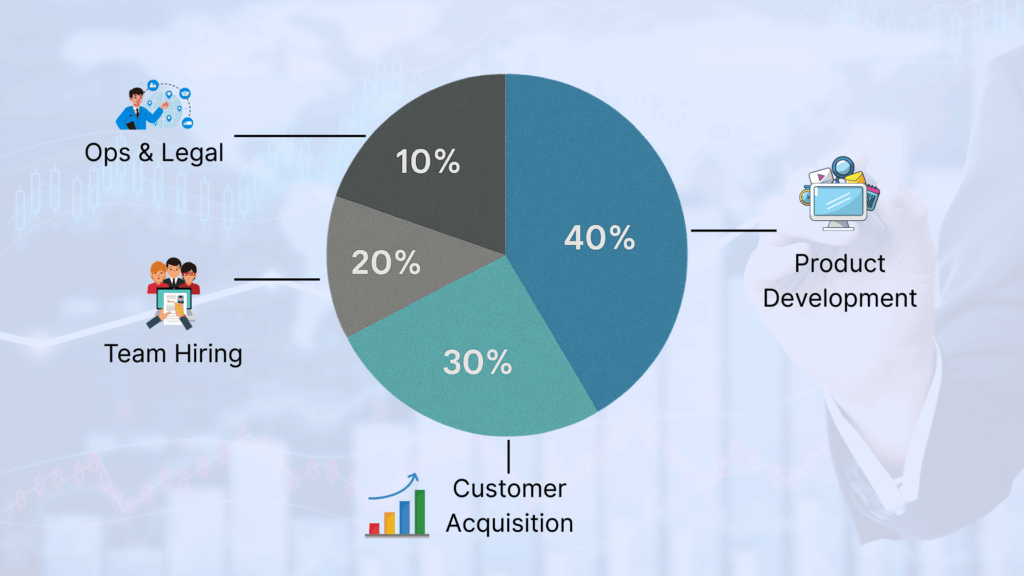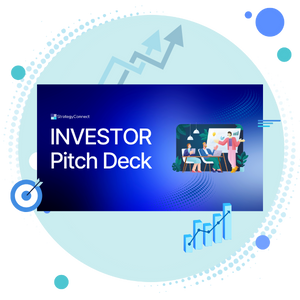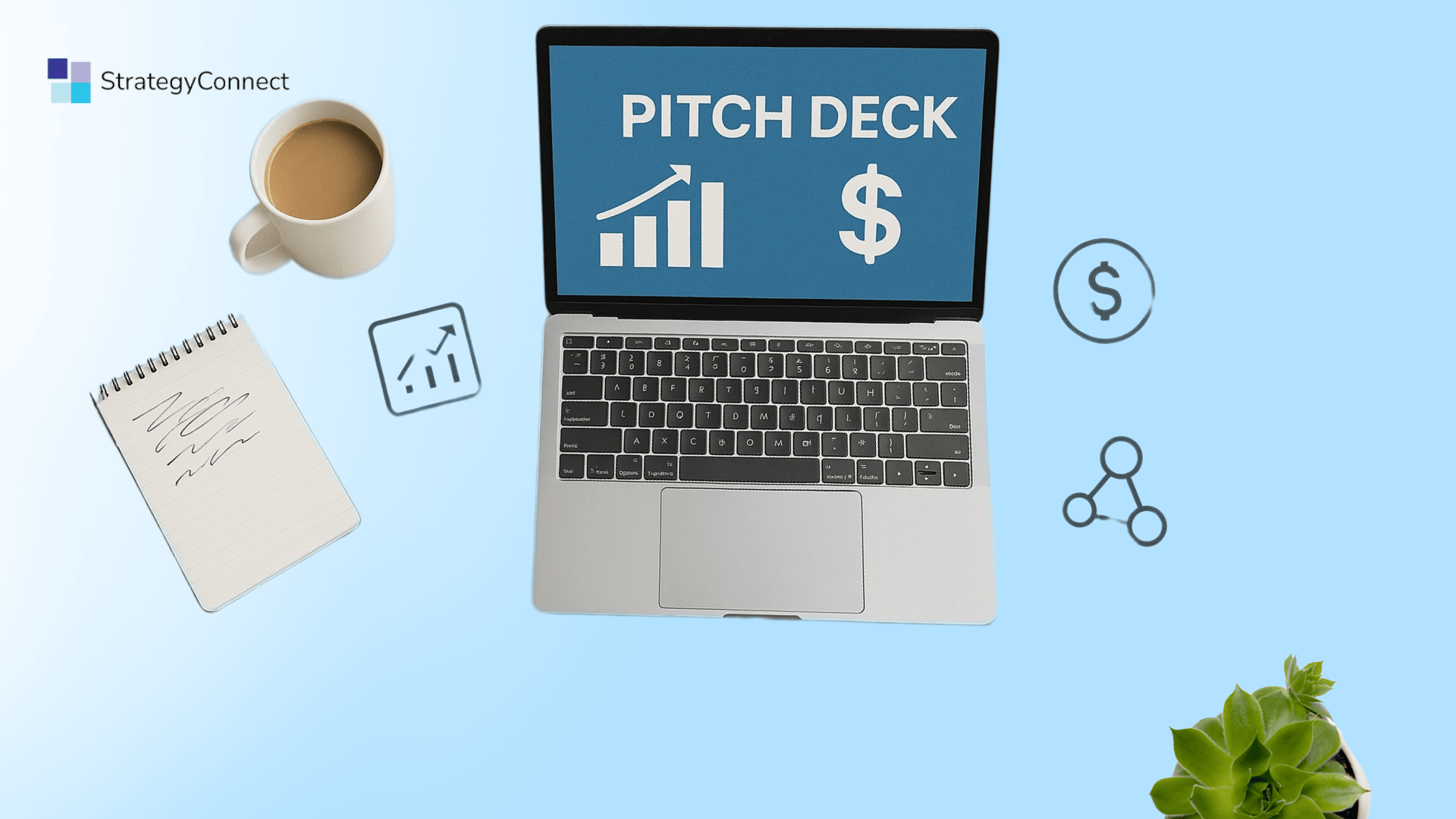Startup fundraising is tough. We get it.
At StrategyConnect, we’ve been in the trenches with 40+ startups, helping them raise over $25M across every kind of fundraising round—from pre-seed fundings to blockbuster Series C investments. We’ve sat through 1,000+ investor meetings with everyone from angel and seed stage investors to venture capital firms, and private equity players.
We’ve analyzed what separates the “Thanks, we’ll pass” decks from the “Let’s invest” ones. No fluff, no filler—just the 10 essential slides that get investors to say yes.

1. The Opening Hook: Problem & Solution (aka “Why Should They Care?”) 🎣
Your first slide is your pickup line. It needs to grab attention and make investors think, “Whoa, I see the problem, and I NEED this solution.”
What to Include:
- The Pain Point – What’s the big, urgent problem your startup solves?
- Your Unique Solution – Why is your approach the answer?
- One-liner Pitch – Think of this as your startup’s superhero tagline.
💡 Example:
Retailers lose $10B to stockouts. Our AI keeps shelves full and sales booming.
2. Problem Definition: The ‘Ouch’ Moment 🩹
If your startup is solving a problem, paint the pain vividly. Make the problem urgent, massive, and impossible to ignore.
What to Include:
- Market Pain Points – What’s broken?
90% of businesses still rely on manual processes, wasting millions. - Scope & Impact – How big is this problem?
$50B lost annually due to inefficiencies - Examples – Real-world pain points
A retailer with 500 stores lacks real-time inventory data, losing millions in sales.
3. Market Context: How Big Is the Playground? 🌎
Investors love big markets. No one wants to fund a niche that can’t scale.
What to Include:
- Total Addressable Market (TAM): How big is the entire pie?
- Serviceable Addressable Market (SAM) – The portion of that market you can realistically capture.
- Current Trends – Is your industry booming or dying?
- Competitors: Are they thriving or failing? Can you eat their lunch?
- Collaborators: Who’s helping you win?
Example:
“Our industry is a $50B market, expanding at 15% annually. We’re targeting a $5B segment where legacy players are slow to adapt. With our unique approach, capturing just 2% means a $100M opportunity—positioning us for exponential growth.”
4. Value Proposition: Why You, Why Now? 💰
Your chance to prove why your startup is the game-changer and how your startup stands out in the fundraising game. Investors need to see how you stand out and why you’re a must-have, not a nice-to-have.
What to Include:
- The Unique Advantage – What makes your solution better, faster, or cheaper
- Competitive Differentiation – How do you stack up against existing solutions?
- Scalability – How big can this get?
Example:
“Legacy solutions are outdated, expensive, and slow to innovate. Our AI-powered platform slashes costs by 40%, delivers insights 5x faster, and scales effortlessly.”
5. Business Model: Driving returns ensuring a guaranteed fundraise 💰
Cool idea, but where’s the revenue? Investors want to know how you turn this vision into cold, hard cash.
What to Include:
- Revenue Streams – Subscription? Transaction fees? SaaS model?
- Pricing Strategy – How do you charge customers?
- Monetization Roadmap – What’s next—premium tiers, partnerships?
💡 Example:
“We make money by charging a $10/month subscription. With 10K paying users, that’s already $1.2M ARR.”
6. Traction & Trends: Show Progress That Excites Investors to Prove You’re Not Just Talk

No one wants to fund a “great idea.” They want to fund momentum. Show them real progress.
What to Include:
- Revenue Growth – MRR, ARR, or pre-sales?
- Customer and tech Metrics – Sign-ups, retention, engagement.
- Partnerships & Press – Any big brands or media mentions backing you?
Example:
“In just six months, we’ve acquired 50,000 users, secured a partnership with Shopify, and grown 300% MoM. And we’re just getting started.”
7. Go-To-Market Strategy: Positioning Your Startup for Fundraising Success🚀
A great product isn’t enough—you need a clear strategy to reach the right customers and scale effectively. Investors want to see a well-defined, actionable plan post a successful fundraise.
What to Include:
- Target Audience & Segments – Who are your ideal customers? B2B, B2C, enterprise, SMBs?
- Marketing & Customer Acquisition – What channels will drive growth? SEO, paid ads, partnerships, influencer marketing, direct sales?
- Growth Phases & Key Milestones – How do you scale? What are your expansion plans beyond the initial launch?
- Challenges & Mitigation Plans – What could slow you down, and how will you address it?
Example:
“We’re targeting Gen Z through influencer collaborations, SEO, and campus ambassadors. By Year 2, we’ll expand into corporate partnerships.”
8. The Team: Investors Bet on People, Not Just Ideas 👥
A killer idea with a weak team? Hard pass. Show them why your squad is built to win.
What to Include:
- Founder Experience – Who are you, and why are you the one to make this happen?
- Key Team Members – CTO, CMO, Product Heads—who’s leading the charge?
- Advisors & Investors – Any big names backing you?
Example:
“Our CTO built a payments system for PayPal. Our CMO scaled a startup from 10k to 1M users. We know how to execute.”
9. Financials & Use of Funds: Making a Clear Case for Your Fundraising Ask💸
Investors want to know how their money will be used—and when they’ll see a return.
What to Include:
- Revenue Projections – 1-year, 3-year, and 5-year forecast.
- Funding Ask – How much are you raising, and for what?
- Use of Funds – How will this money fuel growth?
Example:
“We need $2M to expand our engineering team, accelerate customer acquisition, and scale our AI model. With this, we project a 5X return in 3 years.”

10. Final Thoughts: The “Why You Should Say Yes” Slide 🎯
This is your closing statement—your final shot at making investors lean in and say, “We need to be part of this.”
What to Include:
- Reaffirm the Opportunity – Remind them why this is a game-changing investment.
- Why Now? – Highlight the perfect timing (market shifts, tech advancements, regulatory changes).
- Leave a Lasting Impression – A powerful, concise statement that sticks.
💡 Example:
“We’re not just building a company; we’re leading a movement in [industry]. The market is primed, the demand is real, and the opportunity is massive. Join us at the forefront—before everyone else does.”
At StrategyConnect, we’ve seen firsthand what works (and what crashes and burns). Whether you’re raising $500K or $500M, these 10 slides are your best shot at getting funded.
So go out there, pitch like a pro, and secure that bag.
💬 “Want to see how these principles work in real life? Read our latest case study on how we helped a startup raise $10M.”
Startup Funding Starts with the Right Deck
Download a high-impact investor deck template used by top startups. Join our list and get instant access to a pitch deck template.







